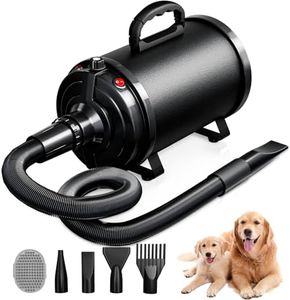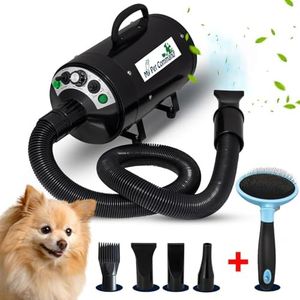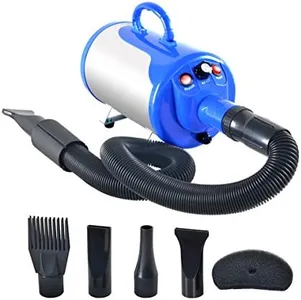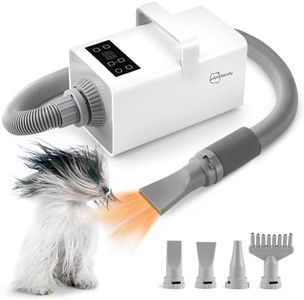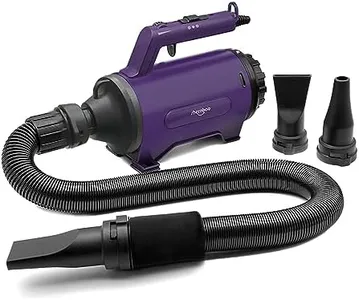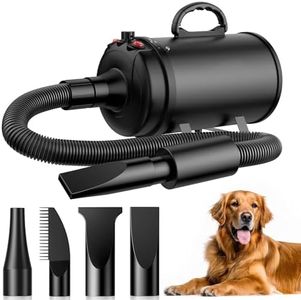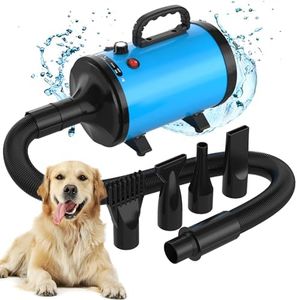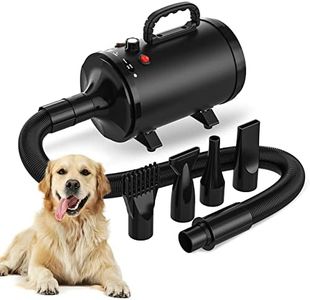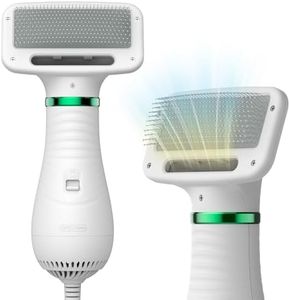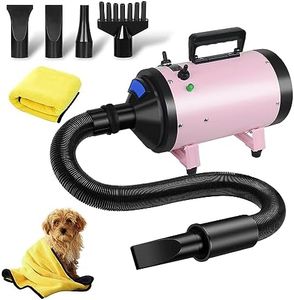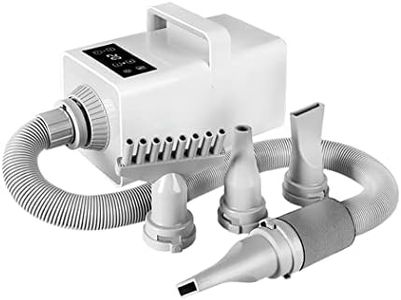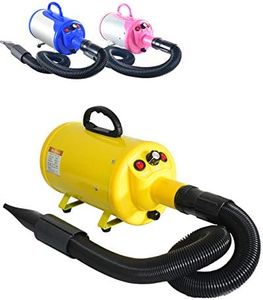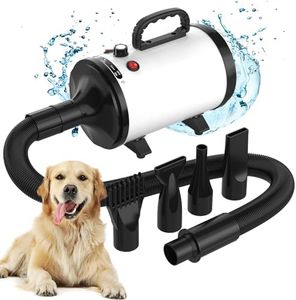We Use CookiesWe use cookies to enhance the security, performance,
functionality and for analytical and promotional activities. By continuing to browse this site you
are agreeing to our privacy policy
10 Best Dog Dryers
From leading brands and best sellers available on the web.Buying Guide for the Best Dog Dryers
Choosing the right dog dryer can make the grooming process easier, faster, and more comfortable for your pet. It's important to consider your dog's size, coat type, and temperament when selecting a dryer. The goal is to find a dryer that safely and efficiently dries your dog without causing unnecessary stress or discomfort. Understanding the key features and specifications of dog dryers will help you identify which model best suits your situation.Type of DryerDog dryers generally come in several types: handheld, stand, cage, and forced air dryers. Handheld dryers are similar to human hair dryers and are portable, but they might not be powerful enough for thick or large coats. Stand dryers allow hands-free operation, making them ideal for grooming sessions, but they take up more space. Cage dryers blow gentle air into a kennel or cage and are designed for dogs that tolerate being enclosed. Forced air dryers are the most powerful; they quickly blast water off the coat and are often used for thick, double-coated, or large breeds, but they can be noisy. Your choice should depend on the size and coat type of your dog, as well as your grooming habits and the environment where you’ll be using it.
Airflow Power (CFM/FPM)Airflow power is measured in cubic feet per minute (CFM) or feet per minute (FPM), indicating how much air the dryer moves. Higher airflow dries dogs faster, which is beneficial for large breeds or thick coats, but too much power can be stressful for sensitive or small dogs. Lower airflow works for puppies, small breeds, or short coats. When choosing, consider whether speed or gentleness is more important for your dog’s needs.
Heat SettingsMany dog dryers come with adjustable heat settings, but not all. Heat can help dry a dog faster, especially in colder weather, but too much heat can be dangerous and uncomfortable for pets. Look for dryers with multiple heat settings or a no-heat option so you can adjust according to your dog’s comfort and safety. Dogs with certain skin conditions or sensitive coats often do better with cool or low-heat airflow.
Noise LevelNoise can be a significant factor, as many dogs are frightened by loud sounds. While most powerful dryers do create some noise, some are designed to be quieter. If your dog is especially sensitive or anxious, consider seeking out dog dryers that are specifically marketed as low-noise or have customer reviews highlighting quieter operation. Reducing stress during grooming will give you a better experience for both you and your dog.
Weight and PortabilityA lighter, more portable dryer is easier to handle, especially if you need to move around your dog or travel. Handheld and compact designs are great if you have limited storage space or need a dryer for occasional use. On the other hand, if you routinely groom multiple or large dogs in a single spot, a heavier, more stationary dryer may not be an issue.
Attachments and NozzlesDifferent nozzles and attachments allow you to control the direction and force of the airflow. Narrow nozzles concentrate the air for spot drying or dealing with thick fur, while wider nozzles or diffusers spread air out for general drying. Consider what will work best for your dog’s coat and the parts of the body you need to reach—having a variety of attachments adds to the versatility of the dryer.
Durability and MaintenanceSince dog dryers may be exposed to fur, dander, and moisture, it’s important to consider how easy the dryer is to keep clean and how well it stands up to regular use. Look for washable filters or removable covers for easy cleaning. If you plan to use the dryer frequently, choose one with a reputation for durability, so it lasts longer and maintains its performance.
